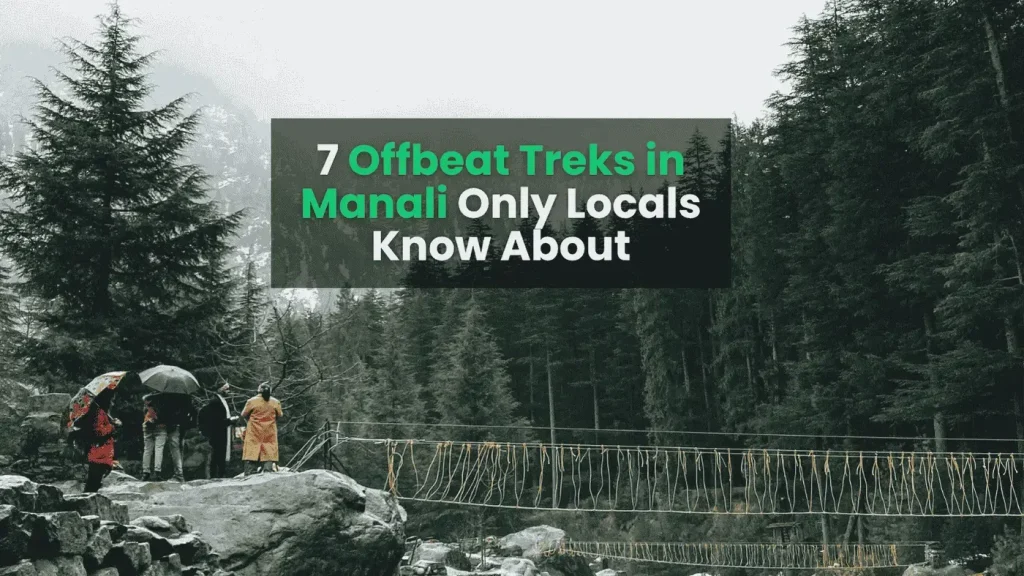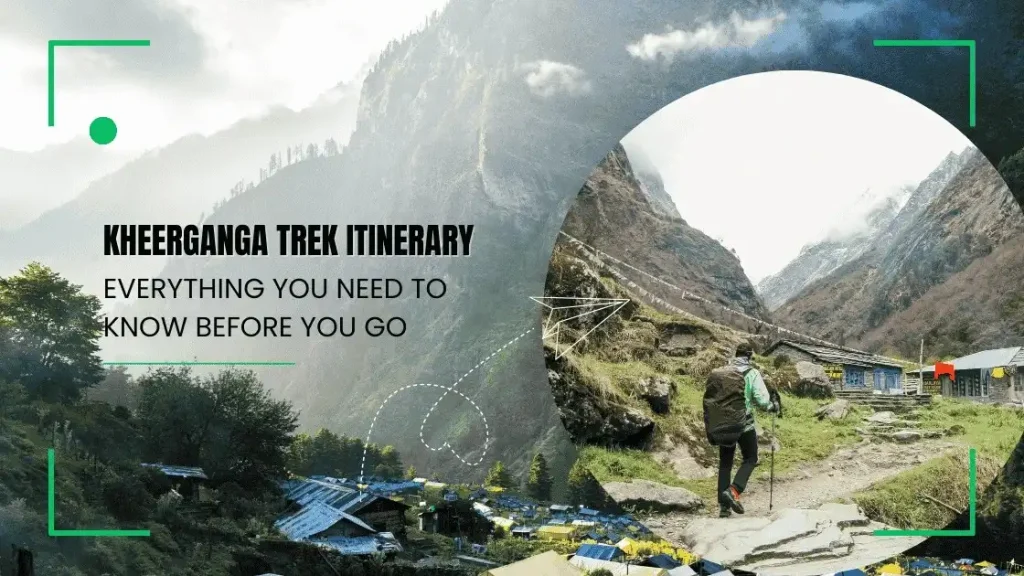7 Offbeat Treks in Manali Only Locals Know About
When people think of Manali, they usually imagine mall roads, cafes, and snow sports. That’s fine for a first trip, but if you’re genuinely interested in exploring Manali beyond the tourist trail, it’s time to discover the routes that locals actually value. After years of exploring this region, I’ve put together a list of offbeat treks in Manali that most tourists either overlook or don’t even know exist. These aren’t your typical Google-listed hikes. They’re real trails which are still raw, less crowded, and full of local flavor. Let’s get into it. Explore short and long treks in Manali 1. Manali Kaisdhar Trek This is one of the simplest but most rewarding treks in Manali if you’re short on time but still want to experience local nature. The Kaisdhar ridge is located in lower kullu valley and stretches through forests and small clearings with sweeping views of the Kullu Valley. Unlike the heavily marketed treks, this one is frequently used by locals heading to nearby fields and orchards. The terrain is gentle and ideal for beginners or casual trekkers. Duration: Half-day trek Best time: March to June, September to November Difficulty level: Easy Tip: Go in the morning for clearer skies and better visibility. 2. Chandrakhani Pass Trek The Chandrakhani Pass trek is a solid option for trekkers who want moderate elevation, changing landscapes, and a trail that connects you to local culture. It starts from Naggar village and leads to Malana, one of the oldest isolated villages in India. You’ll move through pine forests, open ridges, and traditional Himachali settlements. This is a proper multi-day trek, so be prepared with gear or hire a local guide. Duration: 3–4 days Best time: May to October Difficulty: Moderate Known for: High-altitude views and local legends If you’re serious about trekking in Manali, this route is a must-do for its natural and cultural significance. 3. Beas Kund Trek The Beas Kund trek is one of the most accessible high-altitude treks in the region. Starting from Solang Valley, the route takes you to the glacial origin of the Beas River. It’s ideal for those who want a short trek but still want the experience of alpine terrain, rocky trails, and proximity to snow. The trail is well-marked and regularly used for trekking camps and beginner expeditions. Duration: 2–3 days Best time: May to early October Difficulty: Moderat Elevation: Approx. 3,700 meters This is one of the more recognized treks in Manali, but it still maintains a peaceful vibe away from the crowds. 4. Bhrigu Lake via Vashisht Most people who visit Bhrigu Lake go via Gulaba. That route’s fine, but it’s also crowded. I recommend starting from Vashisht instead. This route gives you more isolation, a more rugged trail, and much better interaction with the landscape. You’ll cross dense pine forests, traditional villages, and long stretches of meadow before reaching the lake. The lake itself holds religious significance, believed to be the meditation site of sage Bhrigu. Duration: 3 days Best time: May to October Difficulty: Moderate to Difficult Tip: Camp a night before the summit for proper acclimatization. If you’re aiming for serious trekking in Manali with fewer people around, take the Vashisht route. It’s worth the extra effort. 5. Lama Dugh Trek – A Forest-Dominant Trek Close to Town If you’re looking for a half-day to one-day option that offers elevation gain and solitude, Lama Dugh is ideal. It starts near the Hadimba Temple and climbs through untouched cedar forests up to open alpine meadows with views of Deo Tibba and Indrasan peaks. It’s one of the few treks near the main town that gives you a real sense of escape without needing a multi-day commitment. Duration: Full-day trek Best time: April to October Difficulty: Moderate Known for: Dense forest and quiet ridgelines A solid pick for those who want to squeeze in trekking in Manali between other activities. 6. Dashaur Lake Trek – High-Altitude with No Tourist Traffic Located near Rohtang Pass, Dashaur Lake is a glacial lake that barely sees any foot traffic. It’s not on the typical tourist circuit, and that’s exactly why I recommend it. You’ll need to be comfortable with rocky terrain and fluctuating weather. But in return, you get an untouched lake that reflects everything above it with sharp clarity. The trail can be completed in a day with an early start. Duration: Day trek Best time: June to September Difficulty: Moderate Elevation: Around 4,200 meters If you’re looking for high-altitude treks in Manali that offer serious solitude, Dashaur Lake delivers. 7. Sajla Waterfall Trek – Quick Escape into Nature Just 12 km from Manali is the village of Sajla. A short walk from here takes you to a scenic waterfall hidden behind thick woods. Locals use the area for ritual baths and picnics, and the trail is light and beginner-friendly. Perfect if you’re short on time or not fully geared for mountain trekking but still want to explore something quiet and local. Duration: 1.5 to 2 hours round trip Best time: All seasons except peak monsoon Difficulty: Easy Good for: Families, solo travelers, and nature lovers This is what everyday trekking in Manali looks like when you ask a local where they go to unwind. Final Note Explore beyond the obvious! Most people stick to what’s popular. But if you want the real experience, you’ve got to look a bit further, and sometimes, higher. These offbeat treks in Manali are perfect for those who want more than a checklist, they want real trails, real views, and real stories. Still unsure where to start or need help planning the basics? Head over to Travel To Manali. I don’t offer packages or guides, I simply share honest, straightforward information to help you explore Manali like someone who’s been here long enough to know what’s worth your time.

